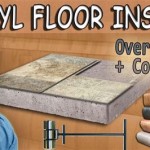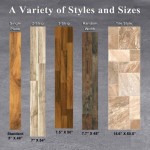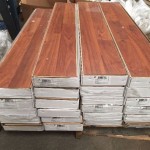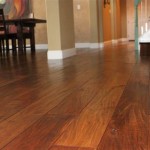Can You Use Vinyl Flooring on Walls?
Vinyl flooring has become a popular choice for its durability, water resistance, and affordability. While traditionally used for floors, its versatility has led many to consider its application on walls. This article explores the feasibility, benefits, drawbacks, and installation process of using vinyl flooring for wall applications.
Durability and Water Resistance
Vinyl flooring is engineered to withstand heavy foot traffic and spills, making it inherently durable and water-resistant. These qualities translate well to wall applications, especially in areas prone to moisture or wear and tear, such as bathrooms, kitchens, and mudrooms. The waterproof nature of vinyl makes it a suitable choice for shower walls or backsplashes, protecting the wall from water damage and mold growth. Its resistance to scratches and scuffs also makes it ideal for high-traffic areas like hallways.
Aesthetic Versatility
Modern vinyl flooring comes in a wide array of colors, patterns, and textures. This allows for significant design flexibility when using it on walls. Whether mimicking the look of hardwood, stone, or tile, vinyl can create a variety of aesthetic effects. This versatility allows homeowners and designers to achieve desired looks without the cost and installation complexities of traditional materials. Furthermore, the seamless nature of sheet vinyl can create a smooth, uninterrupted surface, offering a clean and contemporary aesthetic.
Cost-Effectiveness
Compared to other wall covering options like tile or natural stone, vinyl flooring often presents a more budget-friendly alternative. The material itself is generally less expensive, and its relatively straightforward installation can reduce labor costs. This makes vinyl flooring a viable option for those seeking to renovate or update their spaces without significant financial investment. Additionally, the durability of vinyl can contribute to long-term cost savings by reducing the need for frequent replacements or repairs.
Installation Considerations
While installing vinyl flooring on walls is feasible, it requires careful consideration and proper techniques. Unlike floors, walls present vertical challenges, and the weight of the vinyl needs to be adequately supported. Applying a suitable adhesive is crucial for secure and long-lasting adhesion. For larger sheets of vinyl, proper alignment and smoothing are essential to avoid air bubbles and wrinkles. It's recommended to consult with experienced installers for complex projects or unusually shaped walls.
Substrate Preparation
Appropriate substrate preparation is vital for successful vinyl installation on walls. The wall surface must be clean, dry, and level. Any imperfections, such as cracks or holes, should be filled and sanded smooth. A primer may be necessary to enhance adhesion, especially on porous surfaces. Proper preparation ensures a smooth and even surface for the vinyl, promoting optimal adhesion and a professional-looking finish.
Adhesive Selection
Choosing the correct adhesive is paramount for securing the vinyl flooring to the wall. Different types of vinyl flooring require specific adhesives. Using the wrong adhesive can lead to poor adhesion, bubbling, or even failure of the installation. Consult the vinyl manufacturer's recommendations for the appropriate adhesive type and application method. Consider factors like temperature and humidity when selecting and applying the adhesive.
Maintenance and Cleaning
Vinyl flooring on walls is generally easy to maintain and clean. Regular dusting or wiping with a damp cloth is usually sufficient to remove dirt and grime. Avoid using abrasive cleaners or scouring pads, as these can damage the vinyl surface. For stubborn stains, a mild cleaning solution can be used. The inherent water resistance of vinyl makes it easy to clean spills and splatters, contributing to a hygienic and low-maintenance wall surface.
Ventilation
Adequate ventilation is essential, especially when installing vinyl flooring in areas with high moisture levels, such as bathrooms. Proper ventilation helps prevent moisture buildup behind the vinyl, which can lead to mold and mildew growth. Ensure adequate ventilation in the room during and after installation. Consider installing an exhaust fan if necessary to maintain appropriate airflow and prevent moisture-related issues.
Potential Drawbacks
While vinyl flooring offers several advantages for wall applications, some potential drawbacks should be considered. Vinyl is not as breathable as some other wall coverings, which can be a concern in poorly ventilated areas. Extreme temperature fluctuations can also affect the vinyl's performance. Direct sunlight can cause fading or discoloration over time. Careful consideration of these factors is necessary when deciding to use vinyl flooring on walls.

How To Install Vinyl Plank Flooring On Walls Europine

Tips On Installing Vinyl Flooring Walls Ll

Going Up The Wall Installing Flooring Vertically Floor Trends Installation

Lvt Versatile For Floor And Wall Covering S

Can Vinyl Flooring Be Used On Walls Home Expo Asia

Diy Wood Accent Wall Using Vinyl Planks Love Renovations

Lvt Versatile For Floor And Wall Covering S

Laminate And Vinyl Cladding Finfloor

Wall Cladding With Flooring Material 2024 09 23 Floor Trends Installation

Pin On Bathroom Ideas
See Also







